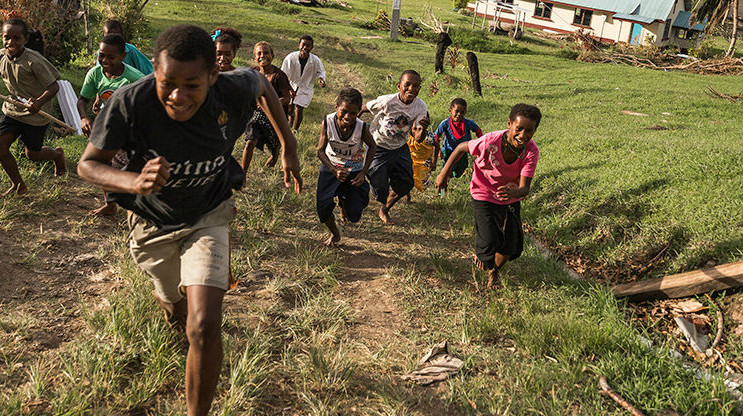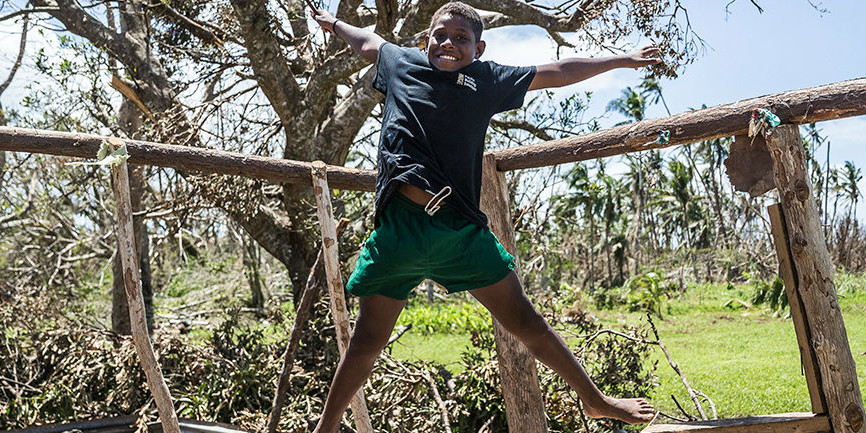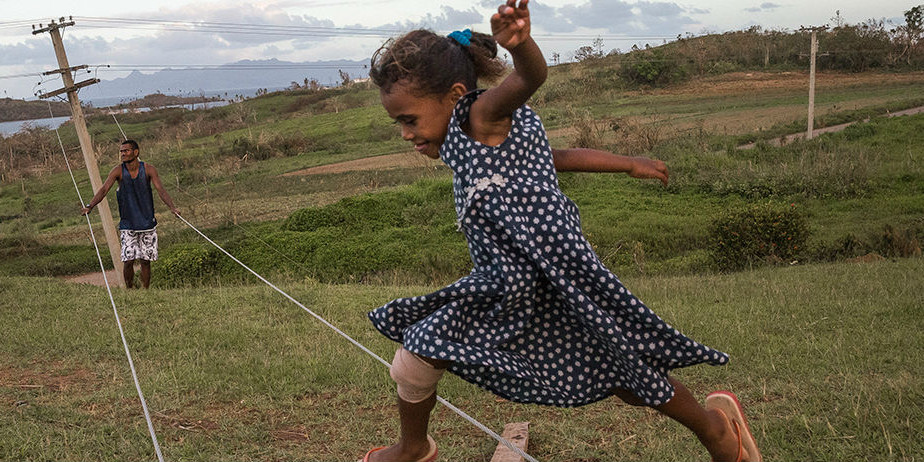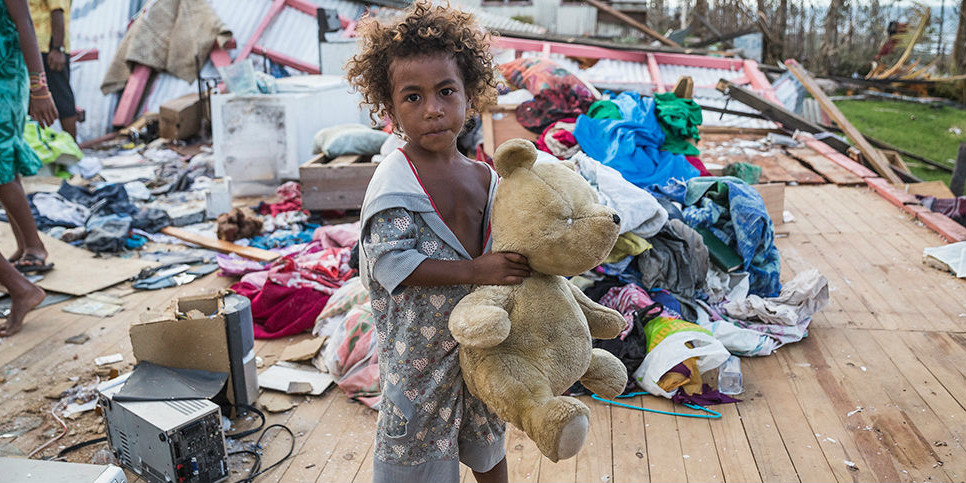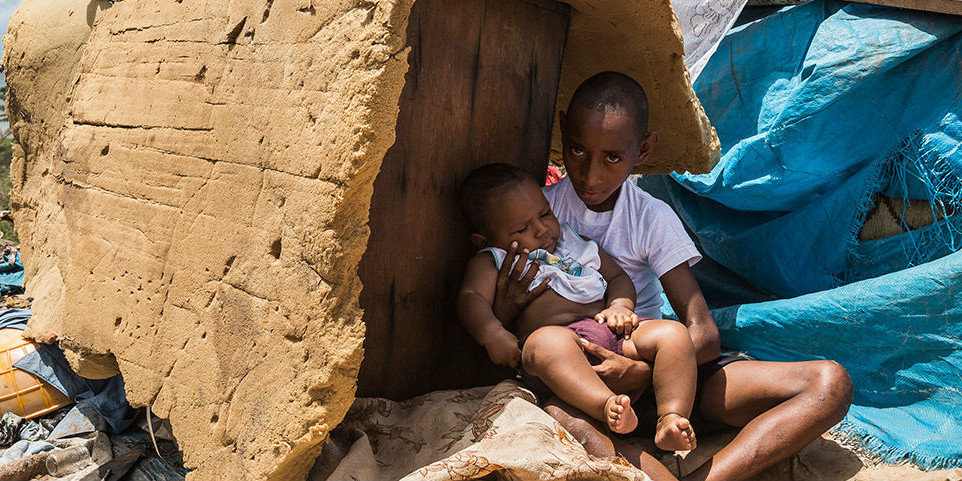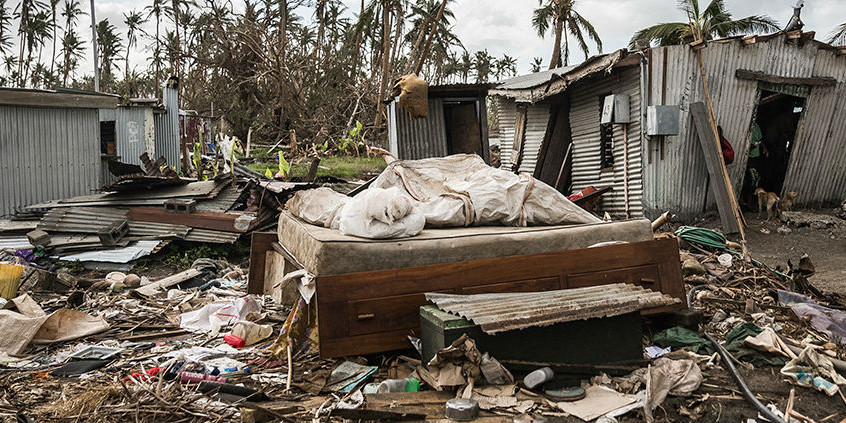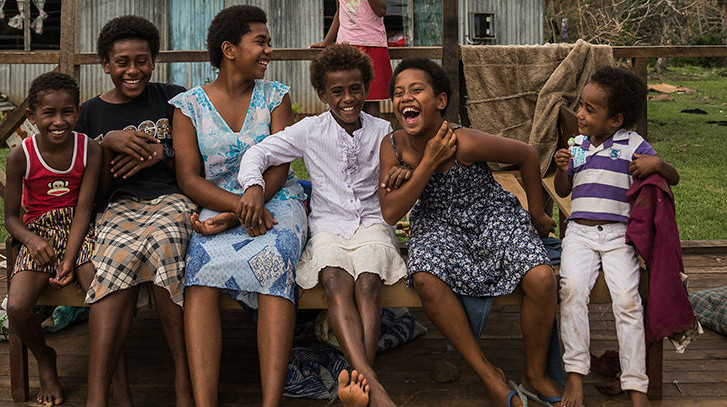On Saturday 20 and Sunday 21 February, mega storm Tropical Cyclone Winston tore through Fiji, destroying homes, schools and livelihoods.
Melanie Patterson, a child and family psychologist, was part of the emergency response team sent by Save the Children. She reflects on her experiences in the hours and days that followed the disaster.
Flying into Fiji felt like a bit of a surreal experience. There were obviously a lot of tourists flying into Nadi for a holiday which, although necessary for the economy, felt strange considering the Category 5 cyclone that had been through the country in the previous two days.
We arrived at the office the next day to find it busy but struggling to operate 100% due to the power being out for a significant amount of time, the Wifi/Internet straining to cope with demand, and not able to network with the printers. In the end, we relocated to the Holiday Inn for a few hours to cool down in their air-conditioned lounge, rehydrate, recharge the laptops and cellphones and access their internet in order to get some work done.
Over this two-day assessment trip I was particularly shocked by the people who were sheltering in Raviravi School. They came from surrounding coastal villages that had been severely damaged in the cyclone. They took refuge in one building on the school site and, when that lost its roof, they moved down to the main school building, which gradually lost its roof too.


